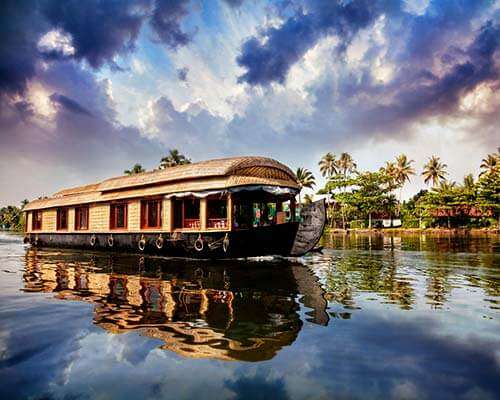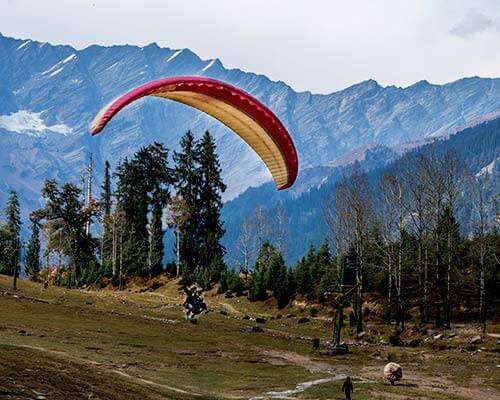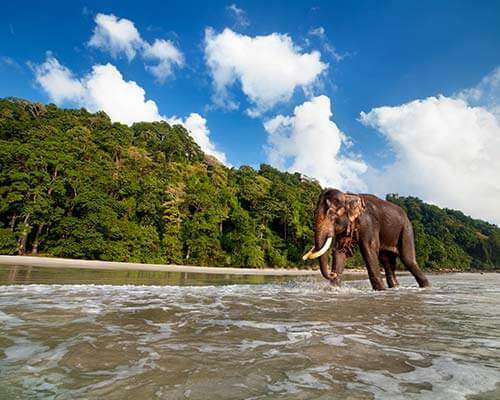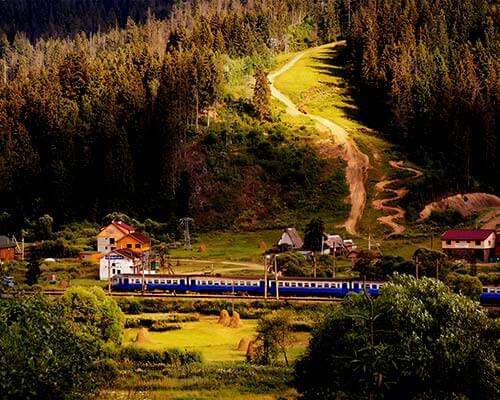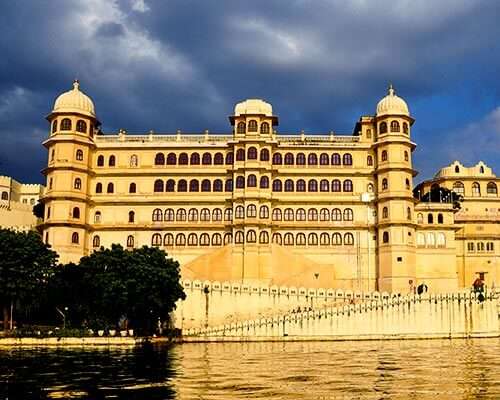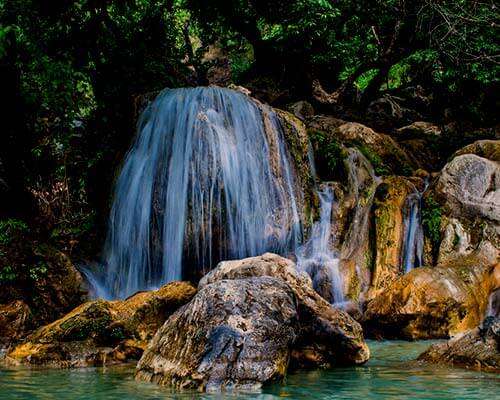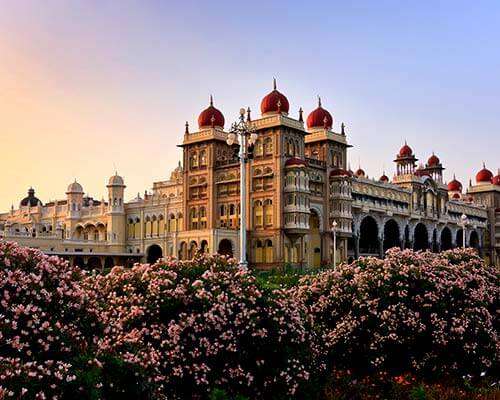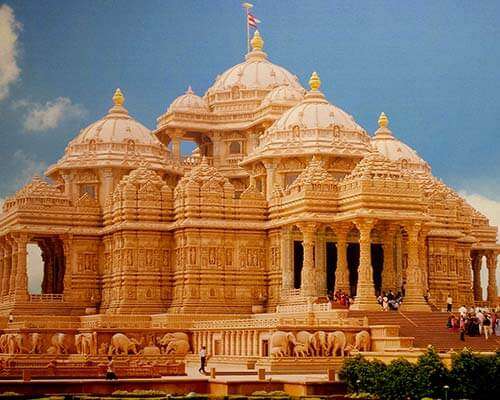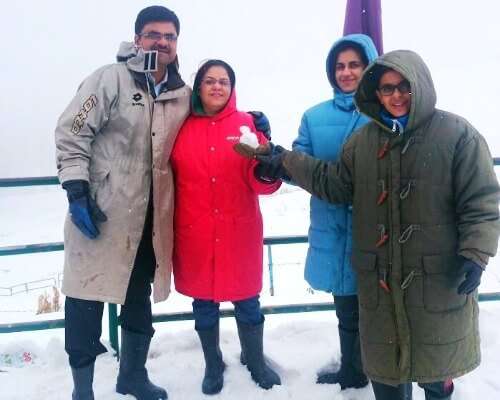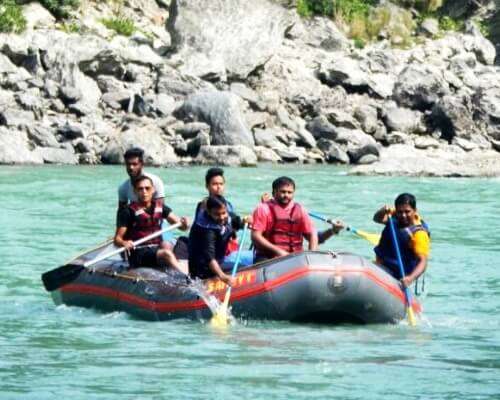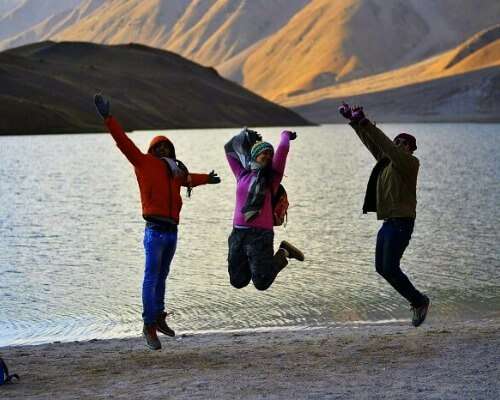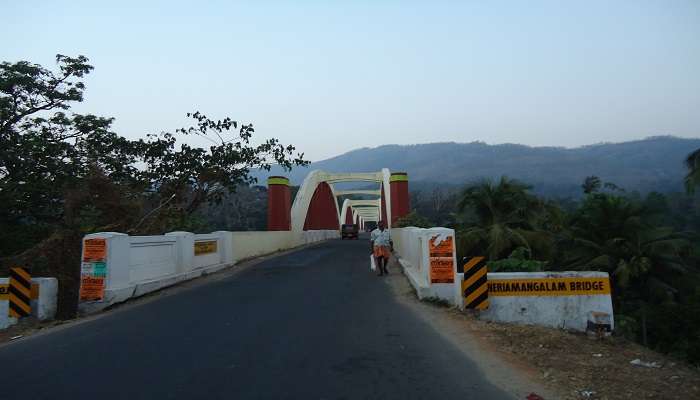Bhimashankar Wildlife Sanctuary: All You Need To Know About This Lush Heaven In Pune
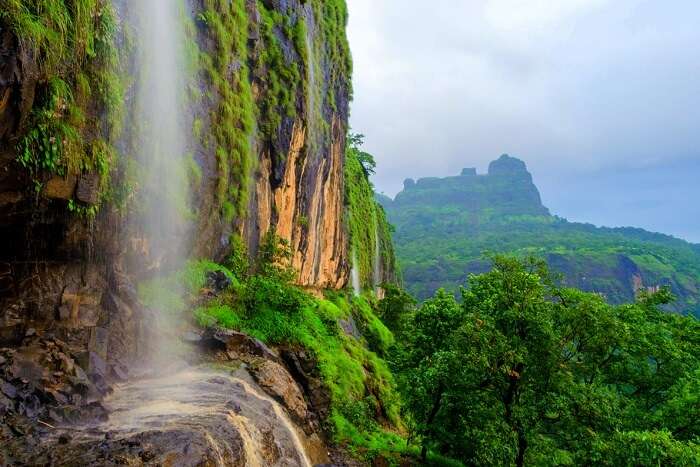
A pristine paradise of nature with lush hills, sparkling waterfalls, and dense forests, Bhimashankar Wildlife Sanctuary is the home of the Giant Flying Squirrel and is a favourite weekend getaway for people from Mumbai and Pune. Located a mere 138 km from Pune, Bhimashankar reserve is an all-in-one package of fun, adventure, nature, and spirituality. Challenging treks for adventure seekers, temples for pilgrims, diverse flora and fauna for nature lovers and wildlife photographers, various unique birds for bird watchers, picnic spots for families with kids, and beautiful natural locations for couples – Bhimashankar Wildlife Reserve has something for every type of traveler!
To make your getaway to Bhimashankar a fun affair, we’ve put down all necessary information about the park right here! Find all you need to know about Bhimashankar like best time to visit, activities, budget, accommodation, transportation, and more in this Bhimashankar Sanctuary guide.
Table Of Content
- Bhimashankar Wildlife Sanctuary Basic Information
- What is Bhimashankar Wildlife Sanctuary famous for?
- Best time to visit Bhimashankar Wildlife Sanctuary
- How to reach Bhimashankar Wildlife Sanctuary
- Bhimashankar Wildlife Sanctuary Timings
- Bhimashankar Wildlife Sanctuary Entry Fee
- Ideal duration of a trip to Bhimashankar Wildlife Sanctuary
- Flora and Fauna of Bhimashankar Wildlife Reserve
- Average per person budget for a trip to Bhimashankar Wildlife Reserve
- Things to do at the Bhimashankar Wildlife Sanctuary
- Bhimashankar Wildlife Sanctuary Accommodation Options
- Restaurants near Bhimashankar Wildlife Sanctuary
- Traveller Reviews for Bhimashankar Wildlife Reserve
- Tips for Bhimashankar Wildlife Reserve
- Frequently Asked Questions About Bhimashankar Wildlife Sanctuary
Bhimashankar Wildlife Sanctuary Basic Information
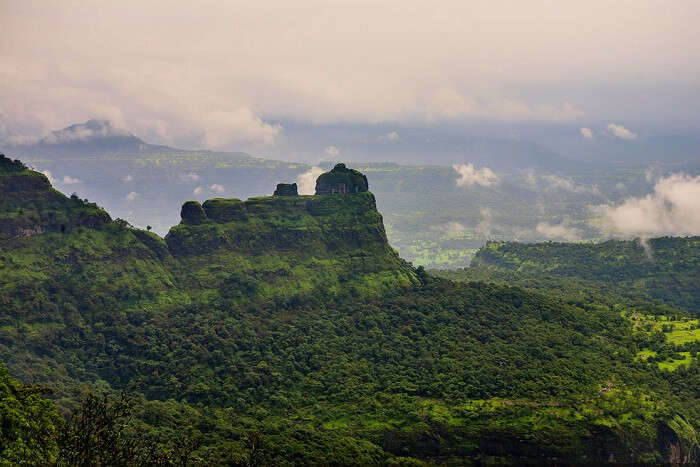
Area: 131 km sq (51 sq mi)
Elevation: 2,100 feet to 3,800 feet above sea level
Location: Ambegaon and Khed Talukas, Sahyadri Ranges of Western Ghats, Pune District, Maharashtra
Latitude: 19.1739137°N | Longitude: 73.5824217°E
Geography: Formed entirely of basaltic rocks, Bhimashankar Wildlife Sanctuary is dominated by Deciduous, Semi-evergreen and Evergreen types of forests. The sources of water in this reserve are the tributaries of river Krishna, namely Ghod and Bhima, as well as those of river Ulhas. The area receives high rainfall in monsoons and faces severe water scarcity in summers. The reserve area is spread over the districts of Pune, Raigad and Thane in northwest Maharashtra.
What is Bhimashankar Wildlife Sanctuary famous for?
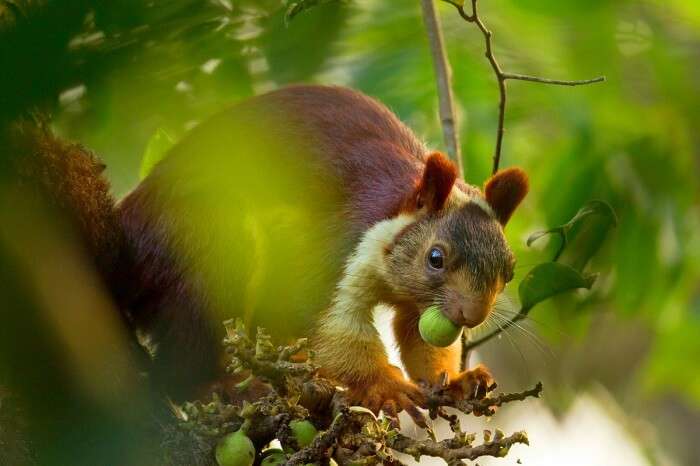
There’s no end to exploring this enormous forest reserve in Pune. But first, let’s tackle the fundamental question. What does Bhimashankar Reserve owe its popularity to? What ecological significance does it hold? What is its contribution to biodiversity conservation?
1. Bhimashankar Sanctuary is home to a subspecies of the Indian Giant Squirrel (or Malabar Giant Squirrel), the state animal of Maharashtra (Scientific name: Ratufa Indica Elphinstone). It is one of the three threatened Indo-Malayan squirrel species and the sanctuary authorities take major steps time and again to ensure its conservation and survival.
2. The sanctuary houses the famed Bhimashankar temple to which it owes its name. This Bhimashankar Jyotirlinga temple is apparently one of the twelve Jyotirlingas (self emerged Shiva temples) in India, explaining why it is one of the most important pilgrimage sites for Hindus from all over the country.
3. Bhimashankar Sanctuary has been identified as an Important Bird Area (IBA) by BirdLife International. The reserve is home to globally threatened species, many restricted-range species, two critical species, various vulnerable species, and near-threatened species of aviaries. The Sanctuary constantly works towards protecting the valuable habitats of these bird species.
Looking To Book A Holiday Package?
Book memorable holidays on TravelTriangle with 650+ verified travel agents for 65+ domestic and international destinations.
Best time to visit Bhimashankar Wildlife Sanctuary
Though it’s a year-round destination, the best time to visit Bhimashankar Wildlife Reserve is the Winters from October to February when one can enjoy this place to the fullest. Here’s what each season offers to travellers at Bhimashankar:

Winters in Bhimashankar forest: The season begins from October and lasts till February. The mercury dips and the temperature ranges between 13 to 28 degrees Celsius during this time, offering the most pleasant weather conditions to explore the sanctuary and spot most of the animals and birds out in the open.
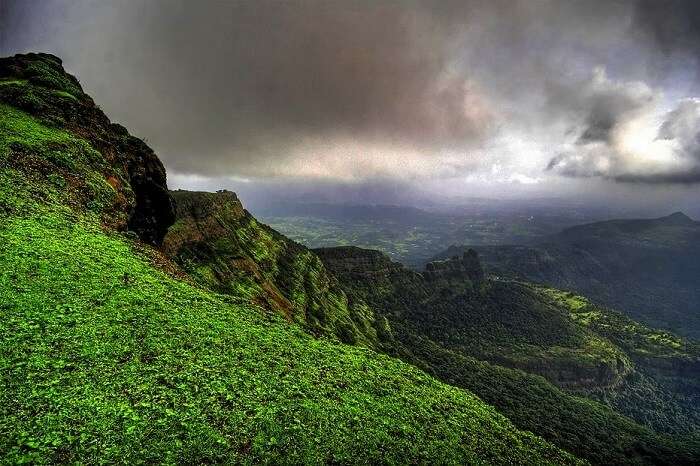
Monsoons in Bhimashankar forest: It starts from June and lasts till September. The season is marked by heavy rainfall on most days which turns the place marshy and difficult to tread or drive on. Travellers prefer not to visit during this time because of the same. However, trekkers like to visit during this season as monsoons turn the place into a bowl of challenges for them to enjoy!
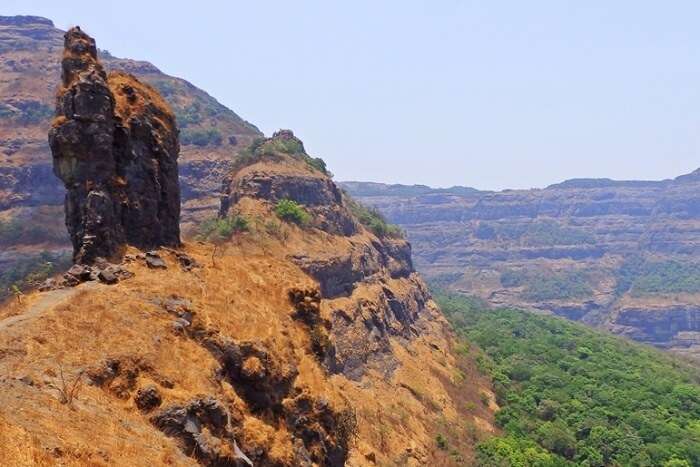
Summers in Bhimashankar forest: From March till May is the summer season in Pune which is generally marked by a hot and dry climate. The temperature during this time ranges between 23 to 37 degrees Celsius which makes this season unfavourable for visiting the reserve.
Must Read: 50 Weekend Getaways Near Pune For A Quick Vacation With Your Loved Ones In 2022!
How to reach Bhimashankar Wildlife Sanctuary
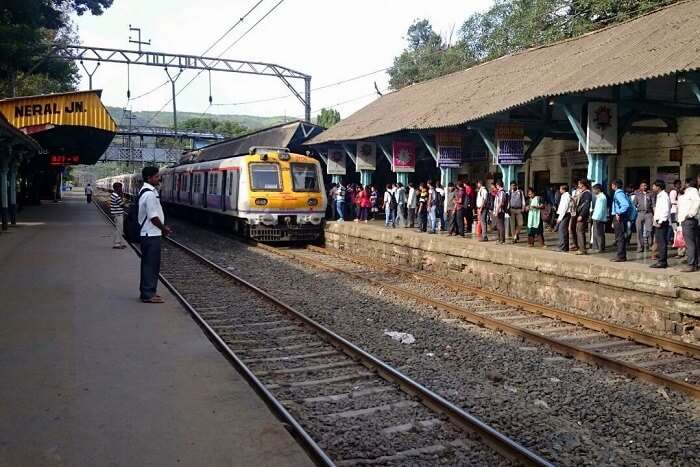
It is relatively easy to get to Bhimashankar Wildlife Reserve since it is well connected to different cities like Pune and Mumbai by a well-maintained National Highway and other road systems. Here’s how one can reach Bhimashankar Sanctuary by different means of transport:
By Air: The nearest airport to Bhimashankar Reserve is Pune Airport which is located a mere 102 km away. Apart from this, the Mumbai Airport is located 220 km away. Both the airports are well connected to major Indian cities like Delhi, Mumbai, Chennai, Bangalore, Kolkata, Indore, and Kochi. There are many airlines serving passengers on this route from Pune as well as Mumbai airports like Air India Express, Kingfisher, Indigo, Jet Airways, Air India, and more. The rest of the way can be covered by road.
By Rail: The nearest railway station to Bhimashankar Wildlife Sanctuary is the Pune Railway Station located at a distance of 106 km from the reserve. Apart from this, the reserve area is located 226 km from the Mumbai Central Railway Station. These two railway stations are, in turn, connected to almost all the major cities in India like New Delhi, Chennai, Jaipur, Ahmedabad, Kolkata, Mysore, and Puri. The rest of the way to the sanctuary can be covered via a scenic road trip.
By Road: Taking one through the varied topography of the country, a road journey to Bhimashankar Sanctuary is definitely a delightful one. One can take a scenic road trip to Bhimashankar from Pune, Mumbai and other nearby cities, as well as small cities like Salgaon, Peth, Rajur, Utchil, Junnar, and other areas. If you don’t wish to drive down to Bhimashankar, you can opt for one of the many frequent bus services available to tourists from different cities, both big and small, that ply to and fro the sanctuary

Distance from Pune to Bhimashankar Wildlife Sanctuary: 138 km
Travel Time: 3 hours 6 minutes
Distance from Mumbai to Bhimashankar Wildlife Reserve: 94 km
Travel Time: 2 hours 40 minutes
Distance from Nashik to Bhimashankar Wildlife Sanctuary: 155 km
Travel Time: 3 hours 8 minutes
Bhimashankar Wildlife Sanctuary Timings
The forest reserve is open at all times of the day for both tourists and locals alike. However, one must not enter the Bhimashankar forest after dark, say 7 PM, unless accompanied by a certified guide in a covered vehicle.
Bhimashankar Wildlife Sanctuary Entry Fee

There is no entry fee for Bhimashankar Reserve other than the one you need to pay for the vehicle that you’re taking inside the sanctuary for your safari tour. Following are the admission prices of different kinds of vehicles one can take inside the forest reserve:
Two-wheelers: INR 10/- per person
Four-wheelers: INR 50/- per person
Heavy vehicles: INR 100/- per person
Ideal duration of a trip to Bhimashankar Wildlife Sanctuary
A duration of 1 night 2 days is ideal for a trip to Bhimashankar Forest Reserve. Though the duration of 2 to 3 hours is sufficient to explore the sanctuary and indulge in all the major activities like safari, temple visit, lake visit, and more, thrill-seekers who come here for trekking and hiking spend much longer time to experience all that this place has to offer and satiate their adventure-hungry souls.
Flora and Fauna of Bhimashankar Wildlife Reserve
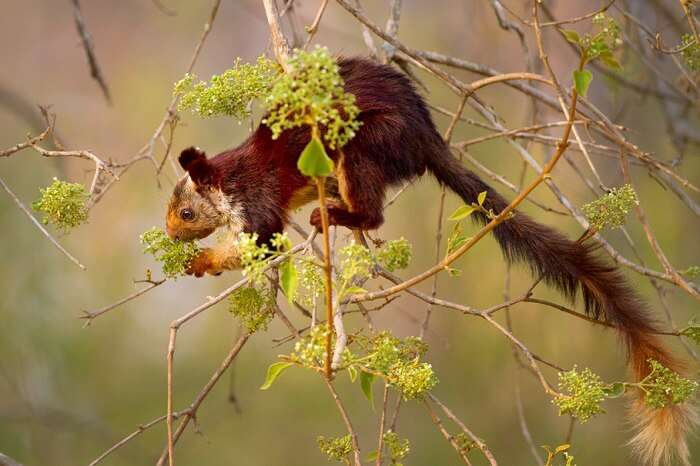
Bhimashankar Reserve is home to a wide variety of flora and fauna, out of which many are rare or endangered species. Though the most popular Bhimashankar Wildlife Sanctuary animals are Malabar Giant Squirrels, one can spot plenty of other animals and birds as well. The forest plays host to a great influx of wildlife photographers and bird watchers every year who come to capture or witness its range of animals, birds, insects, and plant species.

Flora: The reserve’s natural vegetation is dominated mostly by Southern tropical Semi-Evergreen forests, followed by Deciduous and Evergreen forest types. There are various types of trees, plants, herbs, and shrubs found in this region. One can easily spot plants and trees like Mango, Hirda, Bamboo, Jamun, Behda, and more, which dominate the plant species of the area. If one venture into the park during monsoons, they may also be able to spot various species of mosses and epiphytes, including trees bearing bioluminescent fungi if they are lucky!
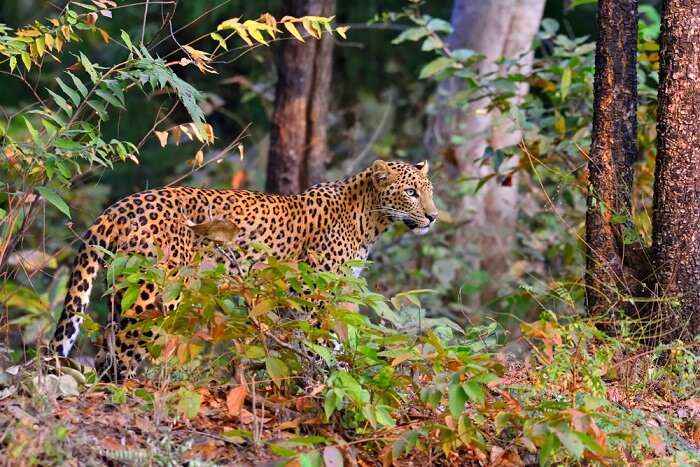
Fauna: The reserve area is home to a diverse species of animals ranging from Leopards, Sambar, Striped Hyena, Golden Jackal, Barking Deer, Sambar Deer, Common Langur, Wild Boar, Mouse Deer, Indian Pangolin, Macaque, and of course, the Malabar Giant Squirrels, among many others. Bhimashankar Wildlife Sanctuary is also home to many specialised and endemic amphibians, reptiles, butterflies and insect species.

Avifauna (Birds): Bhimashankar reserve is home to myriad species of birds like Black Eagle, Malabar Whistling Thrush, Grey Junglefowl, Green Pigeon, and Quaker Babbler etc. Other than these, the reserve harbours many endangered species of birds since it has now been declared as an Important Bird Area (IBA) by BirdLife International. Under the Act, it provides protection to globally threatened species (Greater Spotted Eagle, Lesser Kestrel, Jerdon’s Baza, Nilgiri Wood Pigeon), restricted-range species (Malabar Parakeet, Malabar Grey Hornbill, Small Sunbird, Southern Tree Pie), critical species (Long-billed Vultures, White-backed Vultures), vulnerable species (Austen’s Babbler, Lesser Kestrel, Nilgiri Wood Pigeon), near threatened species (Pallid Harrier, Malabar Pied Hornbill), and their habitats.
Suggested Read: 8 Insanely Gorgeous Destinations Near Pune That Managed To Remain Hidden Till Now!
Planning your holiday but confused about where to go? These travel stories help you find your best trip ever!
Real travel stories. Real stays. Handy tips to help you make the right choice.
Average per person budget for a trip to Bhimashankar Wildlife Reserve
Here’s a breakdown of how much it can cost per person for a trip to Bhimashankar Reserve including aspects like transfers, accommodation, food, and safari.

Avg Flight Rate (round trip): INR 7,000/- per person
Avg Accommodation: INR 1,600/- per person
Transfers: INR 1,000/- per person
Meals: INR 600/- per person
Safari: INR 55/- per person
Miscellaneous: INR 50/- per person
Note: Flight rates are not included in the budget given above as they may vary on the traveller’s destination and time of booking. Also, ‘Transfers’ here indicate transportation from Pune to Bhimashankar Sanctuary (either in a car or via a MTDC bus) and then getting around in the reserve.
Things to do at the Bhimashankar Wildlife Sanctuary
From going on a safari, trekking amid the lush forests, getting familiarised with the tribal population, to visiting the temples and sacred groves, there are plenty of activities in the Bhimashankar forest for travellers to indulge in. Most of these have been listed below so that one can plan their trip to Bhimashankar Reserve at ease.
1. Visit the Chas Kaman Dam
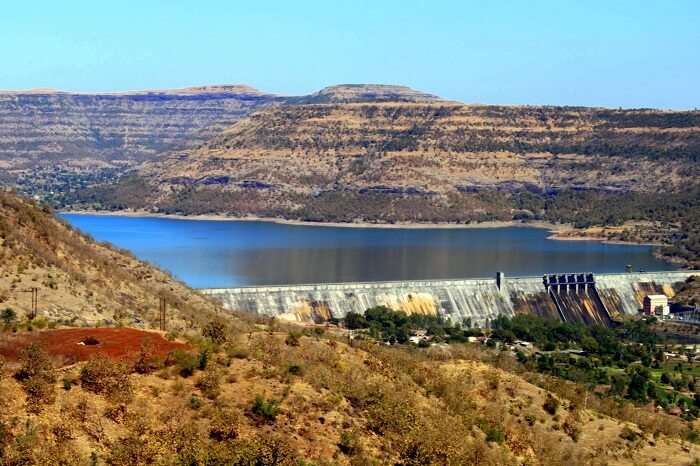
Built over the Bhima river amid picture-perfect settings, the Chas Kaman Dam is among the most important Hydel power projects in the country. Apart from being a crucial dam for Maharashtra, Chas Kaman provides a pretty tourist attraction in Bhimashankar because of its beautiful location and its backwaters.
2. Explore the wilderness on an adventurous safari
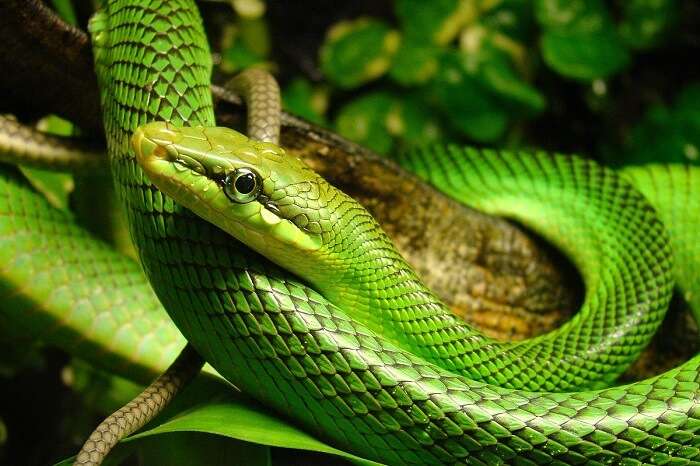
With plethora of animals and bird species greeting visitors in the park, the place is a gold mine for wildlife photographers, birdwatchers, and nature lovers. While the Giant Indian Squirrels are the main attraction inside the park, one can also spot various other common as well as rare animals and bird species living at peace in their natural habitat.
Visitors can either go on nature walks or indulge in game safaris in their own or rented vehicles to spot various animals like leopards, hyenas, macaques, deer, panthers, and birds like eagles and hornbills inside the park. For a Bhimashankar Wildlife Sanctuary safari, one needs to pay a fee for the type of vehicle they take inside the park, which could be a two-wheeler (INR 50/-), four wheeler (INR 50/-), or a heavy vehicle like a bus (INR 100/-).
3. Seek blessings at the Bhimashankar Jyotirlinga Temple
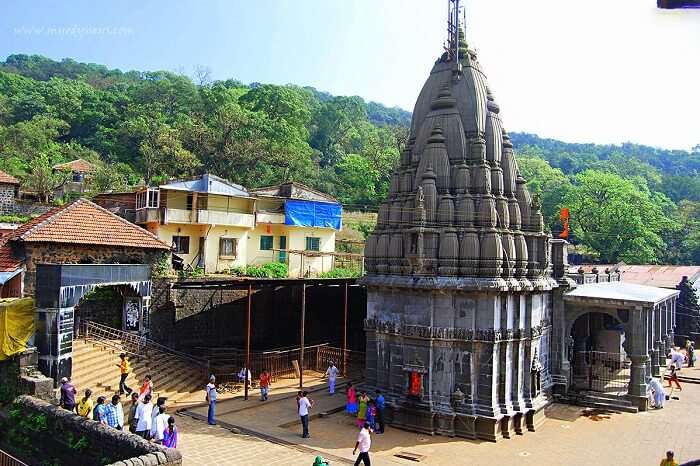
Home to one of the 12 Jyotirlinga shrines in the country, the Bhimashankar Temple is located on the banks of the Bhima river (Chandrabhaga). Located inside a lush meadow in the forest reserve, the temple typically plays host to a great number of devotees dancing outside the gates as if in a trance. And this number increases monstrously on the day of Maha Shivratri when the temple itself turns into a riot of colours and festivities. Built-in the Nagara style of architecture, Bhimashankar Temple displays ancient Vishwakarma sculptors built in the mid-18th century, as well as new structures built later. Though the temple is open throughout the year for devotees who come to Pune to visit the popular Bhimashankar Jyotirlinga, it’s not advisable to visit during Summers.
4. Go on a trekking tour
The mountainous terrains and steep hills of Bhimashankar forest make it an ideal destination for trekkers and hikers and attract a great influx of trekking enthusiasts from across the country. With medium to difficult levels trekking spots amid diverse trails for trekking like dense forests, steep hills, lofty peaks, rocky terrains, narrow pathways, deep rivers, and more, these treks present challenges at every turn and won’t let you get bored! The two major trekking sites in Bhimashankar Wildlife Sanctuary are located in Khandas in the village of Bhavagiri over the Sahyadri Ranges and can be easily accessed via a bus or car ride. Travellers can either pick the Sidhi Ghat route or the Ganesh Ghat route for their trekking expedition to Bhimashankar from Khandas.
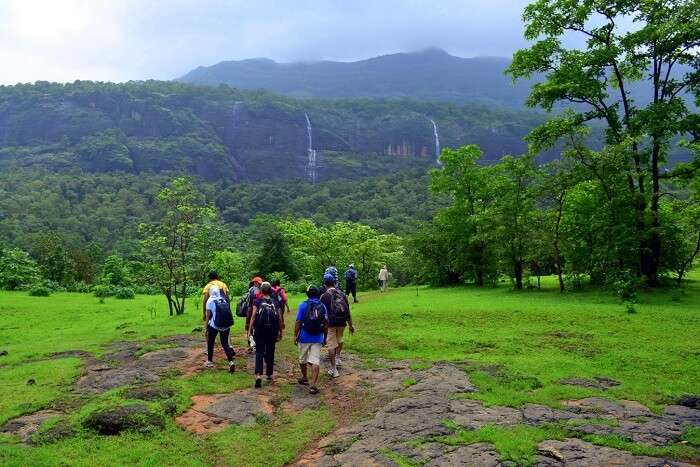
The Sidhi Ghat Route (Ascending Trek): More dangerous of the two, the Sidhi Ghat trek requires trekkers to climb vertical hills and rocky terrains, thus the name Ascending Trek. It is much more suitable for experienced trekkers and hard-core adrenaline junkies because of its complex nature. The Sidhi Ghat route got its name from the three ladders or ‘Sidhi’ (ladder) that have been placed along this tricky trail. This route turns all the more slippery and treacherous during rains, which is why most adventure-hungry souls opt for this trek during the Monsoons.
In order to reach this trekking point, one needs to take a left from the bridge at Khandas to the village nearby, and a left again from the well in that village.
Sidhi Ghat Trek Level: Difficult
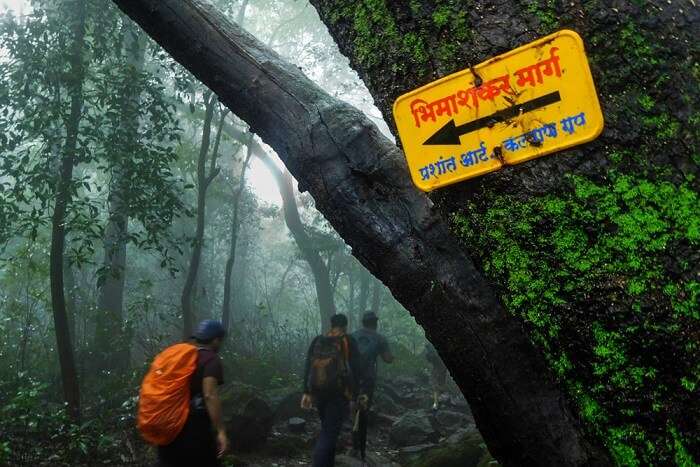
2. The Ganesh Ghat Route (Descending Trek): Though this route isn’t as challenging as the Sidhi Ghat route, it makes up for its lack of difficulty by providing trekkers with breathtaking scenic beauty and sights of an exotic diversity of flora and fauna. The route is longer than that of Sidhi and requires trekkers to mostly descend down a series of slopes and hills while passing structures like the Paddar Killa rock tower and snake hood shaped Nagphani Peak. The route was named after the Ganesh Temple that falls en route. The starting point of the trek lies 2 kilometres ahead of Khandas village.
Ganesh Ghat Trek Level: Moderate
Suggested Read: 22 Monsoon Trekking Destinations Near Mumbai & Pune You Must Plan In 2022
5. Catch fireflies in Bhorgiri
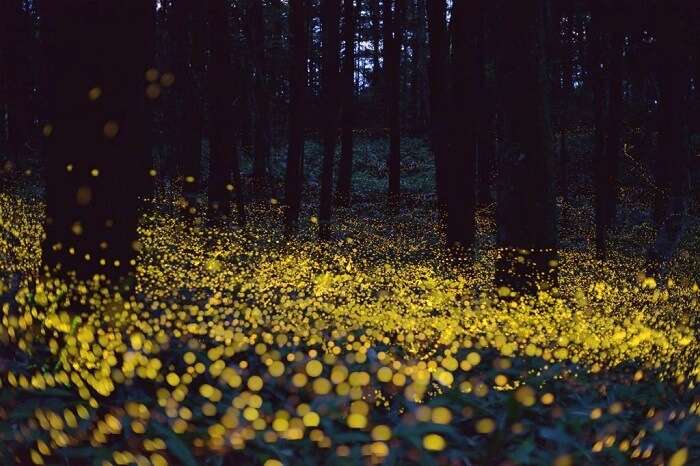
Every year in June, just before the onset of monsoons, the village of Bhorgiri comes to life with a rare phenomenon. Being the breeding ground of fireflies, the hamlet witnesses the number of these pretty little bugs multiply from thousands to millions! This is the time of the Fireflies Festival of Bhorgiri when many people flock to these forests at night to witness mesmerising sights of a sea of fireflies on the ground and up above in the trees. It’s truly a sight to behold! The phenomenon usually lasts just a single day, so make sure you keep a tab on when it’s going to happen in the coming year so that you don’t miss it out!
6. Learn about the Sacred Groves
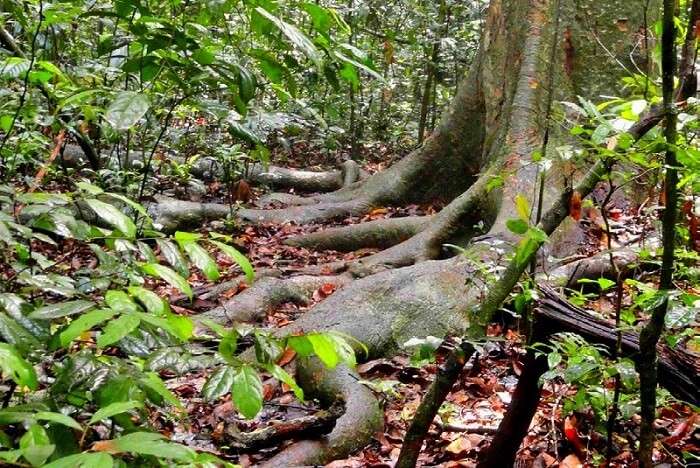
There are about 14 sacred groves, or ‘Devrais’, in Bhimashankar Wildlife Sanctuary. These are near queer, virgin forest patches traditionally earmarked by the local forest people because of spiritual sentiments. Namely Bhimashankar Rai, Bhaka Rai, Ahupe Rai, Vandev, Yelavali Van, Dhakoha, Koteshwar, Umbaryn Bhairavnath, Vaghoba, Talhavadidevi, and Kalbhairavnath, these 14 groves are said to be 1000 years old and hold great ecological significance. Experts suggest these may contain traces of the original species composition and can even provide gene pools for different rare and endemic species of plants. They provide a rich subject for ecological research and the study of cultural heritage.
7. Go picnicking near Hanuman Lake

An ideal picnic spot for families and couples, Hanuman Lake in Bhimashankar provides visitors with gorgeous scenic views and a chance to spot lots of squirrels and birds in the area. Though it’s a little tricky to reach, the expansive area around the lake, the pleasant weather here, and the stunning views will definitely make up for your efforts!
8. Explore the mysterious Junnar Caves
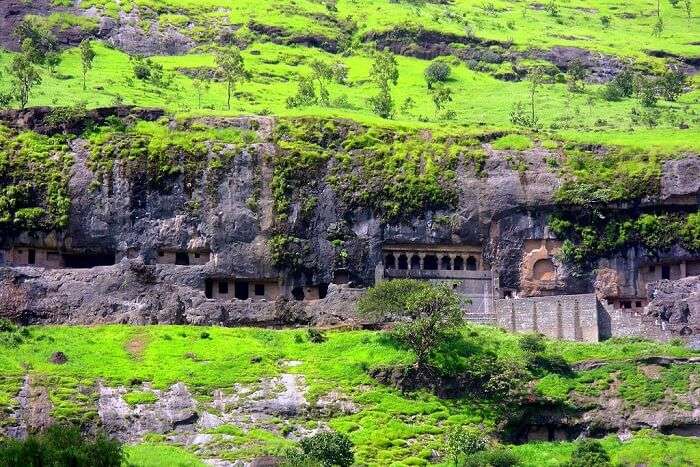
Located near Malshej Ghat, the hills of Junnar are home to over 200 Buddhist caves, which is the largest reported collection of caves at a single place in the entire country. Built somewhere between the 3rd century BC and the 3rd century AD, these caves belong to the Hinayana (Theravada) phase of Buddhism. Some of the popular among these 200 caves are Tulja Caves, Shivneri Caves (near the Shivneri Fort), Amba Ambika Caves, Bhimashankar Caves, Bhutha Linga Caves, and Lenyadri Caves. These caves and hills are an absolute fascination for history lovers, hikers and adventure lovers who visit these them for their uniqueness and pristine beauty. The surrounding hills are also frequented by bird watchers and photographers since they serve as a favourite stopover point for migrating flamingos during monsoons.
9. Take a dip at the Ahupe Waterfalls
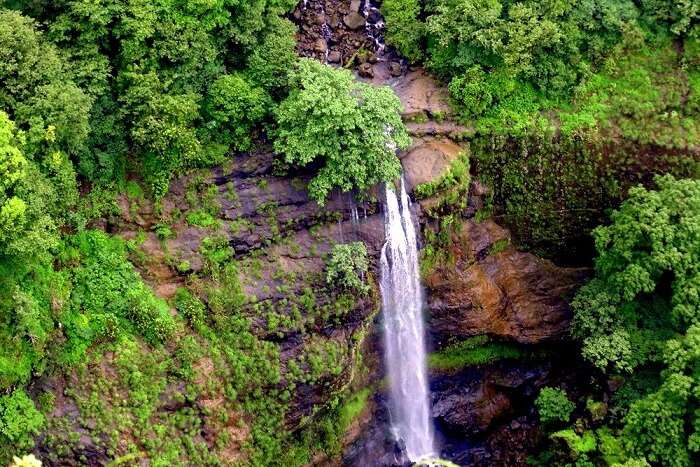
Located inside the isolated and scenic village of Ahupe in the Pune District, the Ahupe Waterfall is an undiscovered paradise surrounded by verdant greenery of hills and jungles. Other than nature enthusiasts and couples, the waterfall is among the favourite spots for trekkers and hikers owing to the scenic nature trails that lead to it. In order to reach this waterfall in Bhimashankar Wildlife Reserve, travelers needs to take the road leading to Bhimashankar Jyotirlinga Temple and get to Dimbhe Dam, where they are required to climb over to the back of the dam and walk all the way to falls via a nature trail running parallel to the beautiful Dimbhe Dam backwaters.
10. Pay your respects at Gupt Bhimashankar

As the name suggests, this place stays hidden from the eyes of many who visit the Bhimashankar reserve. It is essentially the place of origin of the river Bhima, where the water of the river swirls with a ferocious force over a Shivalinga placed on a stone ledge a long time ago. This Shivalinga is, in fact, said to have been discovered here itself, a fact that draws pilgrims to this site in large numbers.
Bhimashankar Wildlife Sanctuary Accommodation Options
There are a number of budget hotels and resorts near Bhimashankar that offer all basic amenities, comfort, good food, and an enjoyable stay to travellers. Some of the nearest and best options have been listed below:
1. Blue Mormon Jungle Holiday Resort
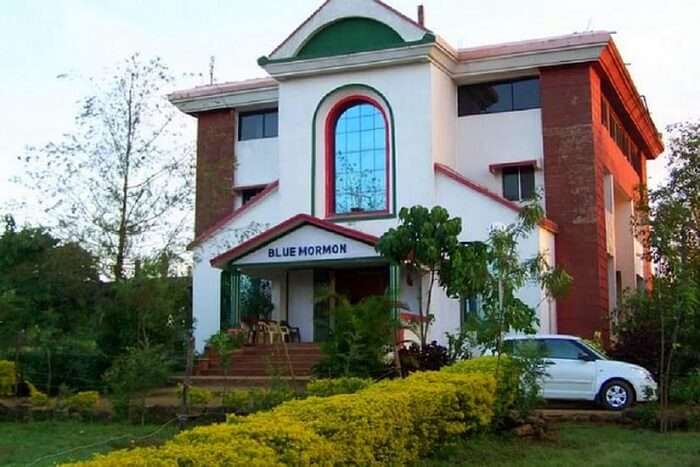
Named after the rare Blue Mormon butterfly that can be seen in these hills, the Blue Mormon Jungle Holiday Resort is a clean and comfortable accommodation option for travellers wanting to soak in the natural goodness of the forest reserve and hills around on their trip to Bhimashankar. Among the best Bhimashankar Wildlife Sanctuary resorts, this property is located in Sahyadri Hills near the reserve, providing visitors unlimited access to the natural beauty around. Some of the services offered here include a dining hall, seminar hall for business events, and various types of rooms for staying like bungalows, cottages, suites, and more.
Location: At Post Karaikudi, Bhimashankar, Pune 411001
Prices starting from: INR 1,500/- per night per person
Google Rating: 3.8 | TripAdvisor Rating: 4
Website | TripAdvisor Reviews
2. Ratwa Resort
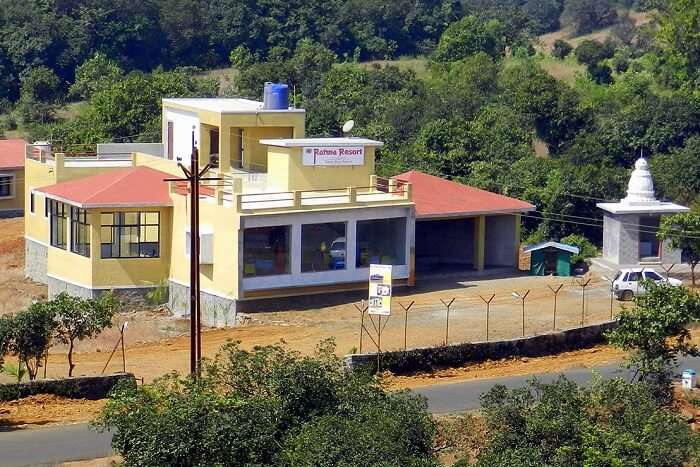
With an ambience that blends with its lush natural surroundings, the eco-friendly Ratwa Resort offers complete relaxation and rejuvenation to travellers and a chance to be one with nature. Some of the best facilities offered here include spacious rooms with ensuite bathrooms, a large dining hall, quick room service, and the option of staying in different types of rooms like cottages and dormitories (for large groups), all of which make this property one of the best Bhimashankar Wildlife Sanctuary resorts.
Location: Mhatarbawadi Nigdale, Bhimashankar 410509
Prices starting from: INR 1,867/- per night per person
Google Rating: 4 | TripAdvisor Rating: 4
Website | TripAdvisor Reviews
Suggested Read: 20 Enticing Resorts In Pune For Couples To Revive, Rejuvenate, And Rekindle Romance!
Restaurants near Bhimashankar Wildlife Sanctuary
Most of the restaurants and diners near Bhimashankar are located inside the hotels and resorts around it and offer sumptuous vegetarian and non-vegetarian cuisines to travellers. Listed below is one pure vegetarian and one non-vegetarian restaurant, the best ones around the forest reserve.
1. Ratwa Resort

Apart from being a comfortable resort in Bhimashankar, this place is also famous for its restaurant serving lip-smacking cuisine to travellers and passers-by. While Besan and Bhakri happen to be the best dishes served at the pure-vegetarian restaurant of this resort, you can enjoy ‘thalis’ of a multitude of dishes customised as per your requirements.
Location: Mhatarbawadi Nigdale, Bhimashankar 410509
Average Cost: INR 150/- per person
2. Trikaya Retreat

Serving a range of delicious vegetarian and non-vegetarian cuisines, Trikaya Retreat is among the best restaurants near Bhimashankar. The mouth-watering Indian dishes prepared with a homely touch along with the special BBQ items served in the evenings will make you want to return to this place again and again!
Location: Sr. No. 12, Village Thoran, Taluka Maval, Jambhivali-Kamshet Rd, Pune 412106
Average Cost: INR 900/- per person
TripAdvisor Reviews
Traveller Reviews for Bhimashankar Wildlife Reserve
Any information about Bhimashankar Wildlife Sanctuary is incomplete without mentioning what its past and frequent visitors say about it. So, we’ve put down some traveller reviews to give you accounts of people who’ve experienced the awesomeness of Bhimashankar reserve.
1. Shampy Deol says: “Scenery is beautiful throughout the way to Bhimashankar Sanctuary. Moreover, at the end of the sanctuary, there is Lord Shiva’s Temple which is known as “Bhimashankar Jyotirlinga”. You cannot expect many food options on the way. But you can take your food along.”
2. Siddharth says: “I visited during November end. This sanctuary was lush green at that time from every side. If you are a photography, nature, or wildlife lover, this place is for you. The rainy season or its aftermath is the best time to visit the temple of bhimashankar, which is located in the heart of the sanctuary. This sanctuary consists of dustbin points which is very good for eco-tourism.”
3. Anuj says: “Loved to be here in the monsoons. The road is good for bike riding. The small villages around will entertain you on your journey. The Bhimashankar temple will relax your mind.”
You can read more Bhimashankar Wildlife Sanctuary reviews here.
Tips for Bhimashankar Wildlife Reserve
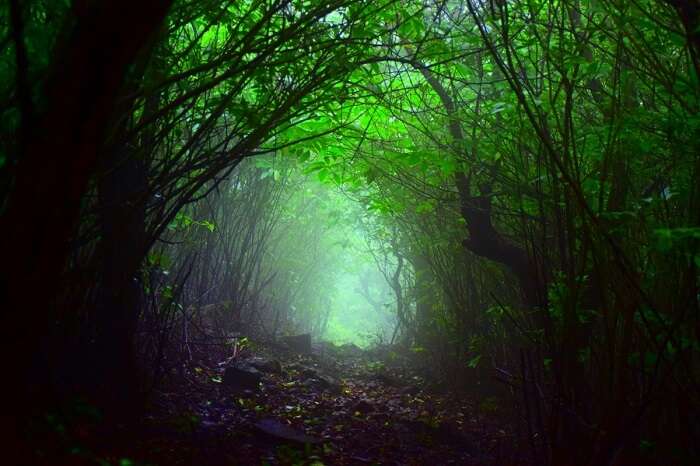
One needs to take a number of precautions before visiting and while going round in Bhimashankar forest so that they can enjoy the park to the fullest while also ensuring their safety. Some of the major ones are listed below.
- Do proper research on the weather conditions before embarking on a trip to Bhimashankar. Avoid in case of rain (if you’re not into trekking)
- Smoking and drinking is not allowed inside the Bhimashankar reserve area
- One must carry essential items like mosquito repellants, a basic first aid kit, water, and dry snacks while going on a safari in Bhimashankar Reserve
- Littering or polluting the water sources is strictly prohibited inside the park
- There are no proper guides, safari jeeps, and safari trails inside the park. One has to engage in a self-guided safari. So make preparations accordingly and take required steps for safety at all times
- Don’t tread into the water sources like marshes and rivers
Further Read: Gir National Park: Your 2022 Guide To The Royal Kingdom Of Asiatic Lions
What are you still waiting for? The best season to visit is on and there won’t be a better time to visit Bhimashankar Wildlife Sanctuary. So, plan your perfect getaway NOW. And if you think we missed out on anything in this Bhimashankar guide, let us know in the comments below.
For our editorial codes of conduct and copyright disclaimer, please click here
Frequently Asked Questions About Bhimashankar Wildlife Sanctuary
What is Bhimashankar Wildlife Sanctuary famous for?
Bhimashankar Wildlife sanctuary is located in Pune and it is famous for different rare species of animal life including Indian Giant Squirrel and different species of rare birds that are almost extinct from the earth. It is also the home to the Jyotirlingas for Lord Shiva that is believed to be sacred among several people.
When is the apt time to visit Bhimashankar Wildlife sanctuary?
You will have a glorious time if you visit Bhimashankar Wildlife sanctuary between October to February. During the winter season, you might be lucky to visit several different wild animals out in the open. That is why the months mentioned above are perfect for your trip.
How can one reach Bhimashankar Wildlife Sanctuary?
You can find Bhimashankar wildlife sanctuary at a distance of 102 km from Pune International airport. Hence, you will be able to reach there easily via flight or else, you could reach there through a train since major cities are connected to Pune via trains. You will find rental cars from the airport or the Pune railway station without any problems.
What is the entry timing for the Bhimashankar wildlife sanctuary?
The sanctuary is opened any time of the day. But you should not visit Bhimashankar Wildlife sanctuary after dark since it might not be safe for you and your family.
What is the entry fee for Bhimashankar Wildlife sanctuary?
For Indian tourists, you would not require any entry fee to get into the sanctuary. But if you will be going there with a vehicle then you will have to pay INR 10, 50 and 100 for a two, four and heavy vehicle respectively.
How much time does one require to explore Bhimashankar Wildlife sanctuary entirely?
You will be able to explore the entirety of the sanctuary within two days. If you do not want to spend the night in the forest, you can complete the expedition within three hours.
What are the different categories of birds that are visible in Bhimashankar Wildlife sanctuary?
You will be able to view birds like Malabar Whistling Thrush, Grey Junglefowl, Black Eagle, Quaker Babbler and many more in the sanctuary.
Looking To Book An International Holiday?
Book memorable holidays on TravelTriangle with 650+ verified travel agents for 65+ domestic and international destinations.
People Also Read:
Dalma Wildlife Sanctuary Dandeli Wildlife Sanctuary Bumdeling Wildlife Sanctuary

Kanika has 4 years of experience in writing blogs and marketing content for travel. And when she’s not writing, she’s either exploring new terrains in a different corner of the world, or out in the city freezing urban scenarios in her camera.

